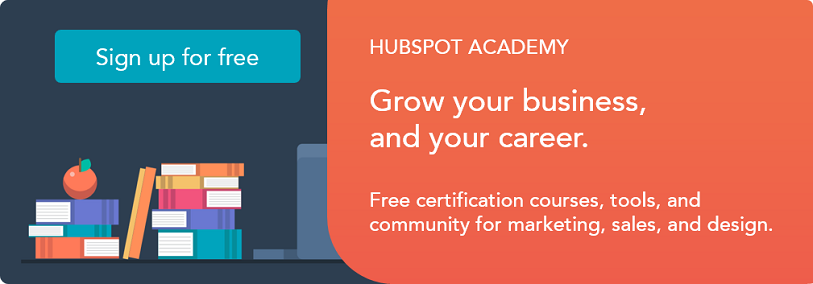

Scale.
You hear the term often in marketing. It basically means increasing results disproportionately to the time or effort previously required to achieve them. Companies like Dropbox and Airbnb are often held up as shining examples of marketing scale, which they accomplish by hardwiring user referral incentives into their products. Both parties benefit equally. Dropbox's users get more free storage and Airbnb's receive rental credits, and the companies drive down customer acquisition costs. Greater reach for fixed effort.
But you know what doesn’t scale? In fact, you know what will never scale? Your time.
Rich or poor, executive or intern, we are all given the same number of hours in a day. And yet, for marketers who make their living online, social media makes us more accessible to others, paving the way for increased demands on our time. Each new follower brings an increased potential for guest article requests or “brain picking” coffee invitations.
As flattering as these invitations are, accepting them comes at a cost -- generally paid in time away from one’s job, family, or hobbies. So how does one say “no” without offending or burning a bridge?
For that answer, I turned to a number of prominent marketers and executives to find out how they handle random requests. (One, Steve Woods, co-founder of Toronto-based sales software company Nudge, pointed out the irony of my request.) Overall, the methods of handling generally fell into one of two categories: filtering or redirecting.
Filtering
Woods filters on the amount of effort the person has invested in solving their own problem. For example, he will ask probing questions like, “Have you tried X?" or “Have you called Y?” If the answers reveal a lack of effort, Woods will be less apt to accept a meeting.
As an entrepreneur, however, Woods can also be Machiavellian. If he feels the person can add value to his existing network or possesses a unique skill, then the person may skip to the front of the line.
Interestingly, several of the folks with whom I spoke volunteered that they generally make exceptions for students. Like Woods, Content Marketing Institute's Chief Strategy Officer Robert Rose is partial to those in the early stage of their careers. “I particularly love helping students sort stuff out,” said Rose. “If they've clearly put time and effort into a real request and have researched who I am, then I'm very happy to take the time to either email them or take a call. I consider it an honor to be asked.”
Similarly, marketing author and speaker Jay Baer carves out time for those in his surrounding area. He told me that he fills local requests over lunch or a beer. “A man’s gotta eat and drink,” he quipped.
Flybridge Capital partner Matt Witheiler trusts his personal network to serve as a filter. “I generally only do in-person meetings with people who are connected to others I know and respect. My likelihood of meeting for coffee increases dramatically if I was introduced by someone in my network,” he says.
Others use money as a filter. Social media speaker Jason Falls will soon allow anyone to sign up for an hour of his time, for a fee, via his website. (Personally, unless it’s a HubSpot customer, partner, or a company I advise, I require a donation to a nonprofit for my time.)
Lastly, Ann Handley turns to a clever “contact me” form as a filter. She said that the form originally resulted in too many inquiries, so over time she’s made it increasingly prescriptive. A skilled and prolific writer, Handley’s managed to constrain the volume of requests through the language she uses on the form.
Redirecting
It would be difficult to find someone whose time is more in-demand than Crowd Companies founder and former analyst Jeremiah Owyang. Considered the foremost authority on the booming “collaborative economy,” Owyang needs to preserve his time for building his startup and advising. He refers inquirers to his archive of blog posts.
Owyang will send the person a link to a relevant article and requests they read it before advancing the discussion. He said, “To date, I've completed over 2,800 blog posts, so I can usually lean on that body of answers and avoid calls. If there's a question that I cannot answer through a reference then that tells me to write another post!”
Another benefit to requiring the person to clearly state their goal upfront is that it can help the recipient redirect to a colleague. Baer and HubSpot CMO Mike Volpe both often refer inquiries to members of their teams who are better suited to answer the person’s question.
HubSpot’s influencer relations lead, Laura Fitton, introduces a pre-meeting filter. After a call or coffee has been scheduled, she asks the person to send her information on what they want to discuss and, depending on the request, do a little reading themselves. “If they are not willing to prepare for a meeting they've requested, why should I take several hours of time to fulfill their request?” she asks.
Other Methods
Others proposed alternative solutions, like Fitton’s “batch process,” in which she urges multiple inquirers to meet her at networking events. Volpe can be prone to surrender -- figuring those who reach out to him are potential customers, he’ll tries to find a way to meet as many as possible (usually up to two per week).
Of everyone I interviewed, nobody had a more codified system than entrepreneur, author, speaker and high-energy motivator, Andrew Davis, who expresses his gratitude by answering every request with a clearly defined path to a conversation. He then dedicates one hour per week -- half for for-profit companies and half for nonprofit organizations -- to calls, which he books three months out using a scheduling tool called Mixmax.
What Doesn’t Work?
Indiscriminate “drive-by” requests are unlikely to be fulfilled. Rose gave two real-world examples: “Hey, can I show you my new app? Need your input” and "Thanks for the follow, can I pick your brain for 10 minutes what's your schedule look like tomorrow?” He described these inquiries as “non-starters.” Not only are these requests presumptuous, but they also smack of spam. How many others are receiving the identical message? Presumably, many.
Without exception, all influencers were grateful that others expressed interest in their perspective, and it seemed as if everyone would take all of the requests if time permitted. But given that time doesn’t scale, these experts recognized that self-preservation requires that they filter or redirect many of the requests for their time.
Nevertheless, there’s universal sensitivity to saying, “no.” Altimeter Group co-founder Charlene Li, for example, maintains canned responses in Gmail. “Even if I say ‘no,’” she says, “I think it's bad form to just ignore people. You get a reputation.”


![33 Little Ways to Improve Your Nonverbal Communication Skills [Infographic]](https://blog.hubspot.com/hubfs/00-Blog_Thinkstock_Images/nonverbal-communication.jpg)
![International Communication Tips: How to Have Better Conversations With People All Over the World [SlideShare]](https://blog.hubspot.com/hubfs/00-Blog_Thinkstock_Images/global-communication-tips.png)
